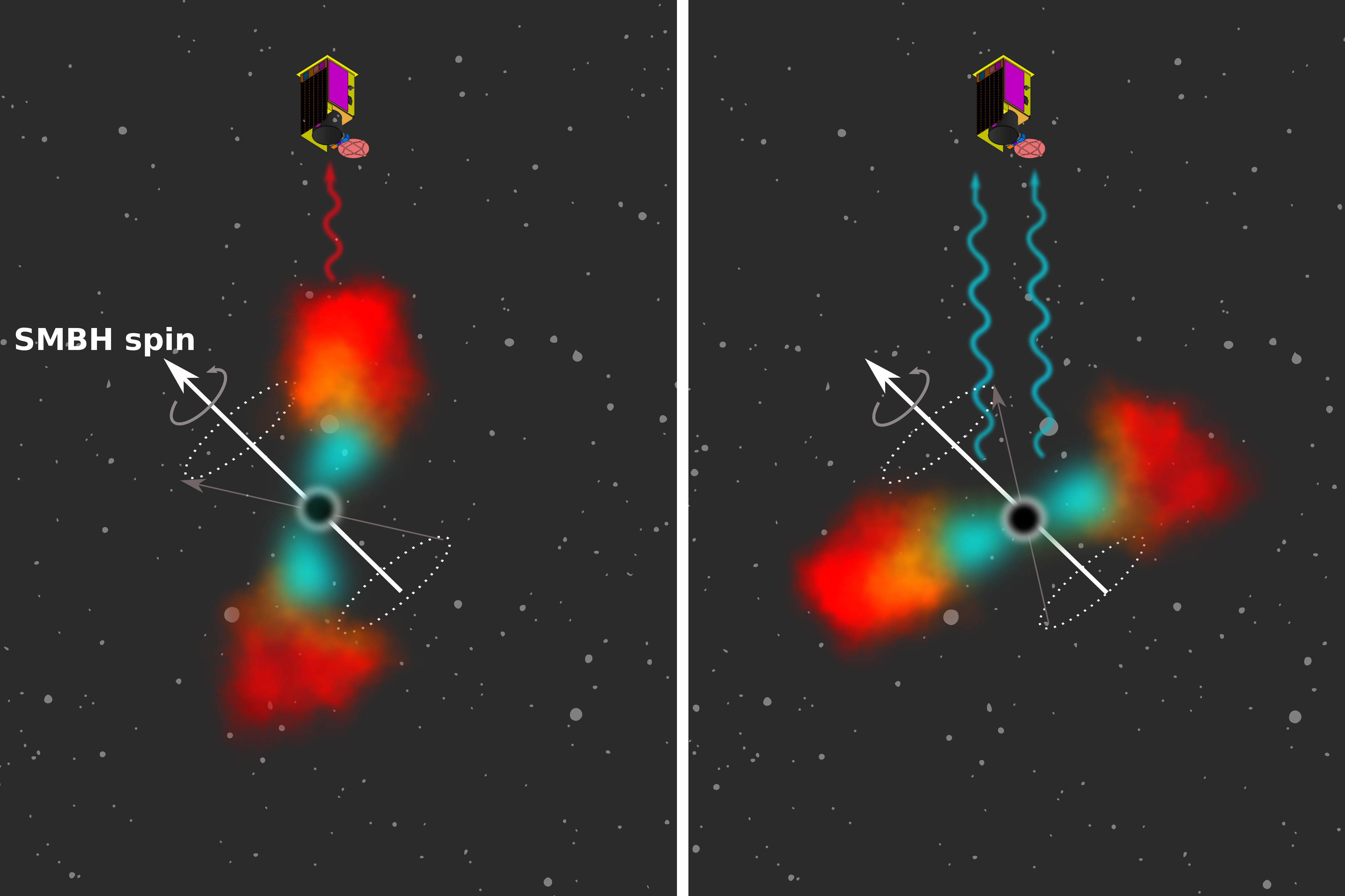Tidal disruption events (TDEs) are bright releases of energy caused by a supermassive black hole having a snack. The snack in question is usually a star that got so close it was ripped apart. Part of the snack is thrown out, but the rest of the stellar plasma forms a hot accretion disk around the black hole. This disk wobbles, and astronomers have now worked out how to use that wobble to measure the spin of black holes.
The TDE in question is called AT2020ocn. Researchers realized that its X-ray emission seemed to have a peak of luminosity every 15 days, repeating multiple times. This is believed to be caused by the disk rotation interacting with the rotation of the black hole. The gravity of a supermassive black hole is such that it warps the surrounding space-time massively, and when spinning, it drags space-time with it.
The phenomenon is known as the Lense-Thirring precession, although one cannot normally see it. Black holes do not emit light, so the precession remains invisible. That is, unless you suddenly have something that shines – like the debris of a recently deceased star. Armed with that theoretical backing and estimates for the mass of the supermassive black hole and star, they worked out that the spin of the black hole is less than one-quarter of the speed of light.
The X-ray flashes were seen for 130 days of the 200 that the object was observed. Afterward, the disk had petered out. The observations were conducted by the NICER telescope. The acronym stands for Neutron star Interior Composition ExploreR, and it is an X-ray telescope attached to the International Space Station.
“The key was to catch this early on because this precession, or wobble, should only be present early on. Any later, and the disk would not wobble anymore,” lead author Dheeraj “DJ” Pasham, from the Massachusetts Institute Of Technology, said in a statement.
Schematic view showing a supermassive black hole processing producing flashes of light.
Image courtesy of the researchers
The importance of understanding the spin of supermassive black holes is because it will provide insight into the growth of these objects. If supermassive black holes grow mostly by accretion, the spin will increase thanks to the small contribution of mass falling onto it. But collisions between black holes would reduce the spin as this would be the resulting product of the spin of two different black holes unlikely to be aligned.
This first measurement demonstrated that it is possible to work out the spin of a black hole using a TDE, and current and upcoming telescopes can build up a population of objects. From these future observations, a general idea of the history and evolution of supermassive black holes might be glimpsed.
“Black holes are fascinating objects and the flows of material that we see falling onto them can generate some of the most luminous events in the universe,” added study co-author Chris Nixon, associate professor of theoretical physics at the University of Leeds in a statement sent to IFLScience. “While there is a lot we still don’t understand, there are amazing observational facilities that keep surprising us and generating new avenues to explore. This event is one of those surprises.”
A paper describing the results is published in the journal Nature.
Source Link: Supermassive Black Hole’s Spin Measured For The First Time With Destroyed Star
